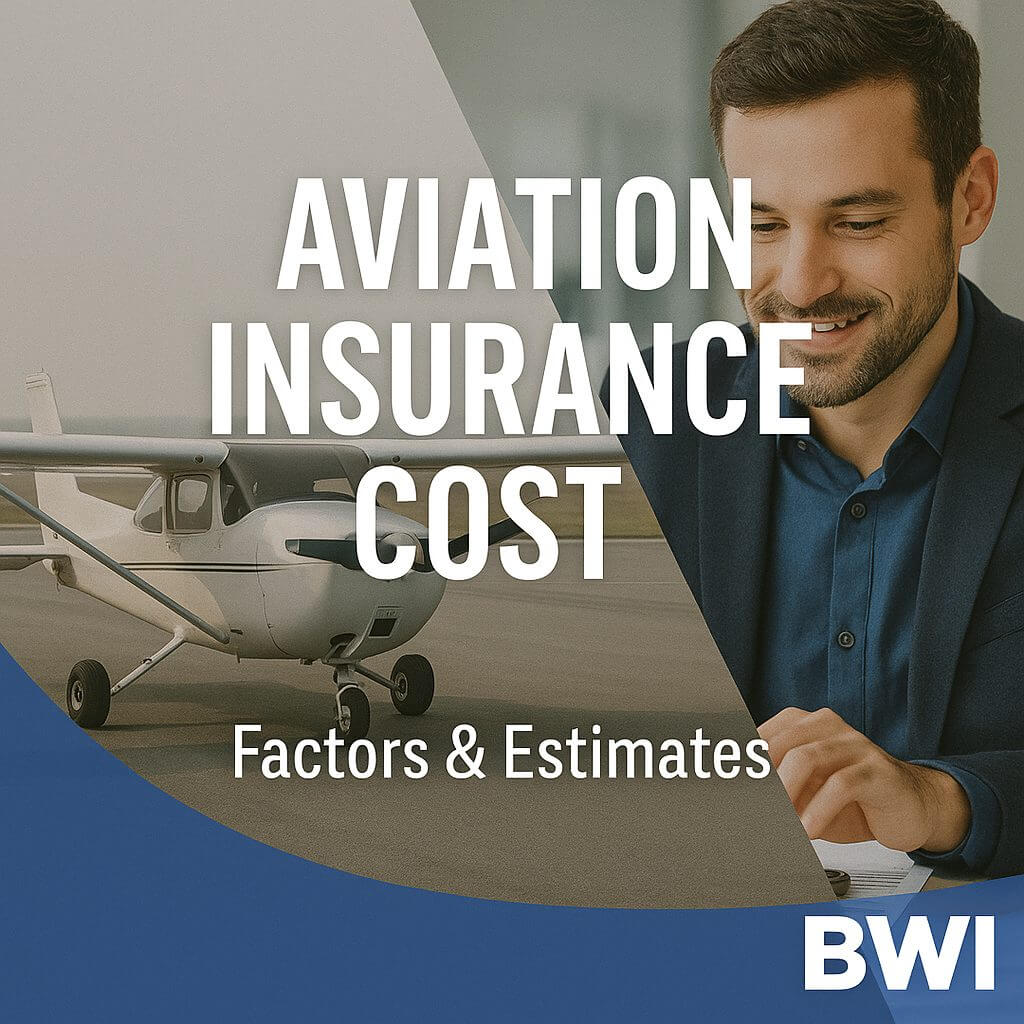One of the first questions every aircraft owner asks is: “How much will my aviation insurance cost?”
The answer? It depends, and in aviation, it depends on a lot more than most people realize.
Unlike auto or homeowners insurance, aviation insurance premiums are calculated from dozens of data points, from your aircraft’s hull value to your training history to the exact type of flying you do. Understanding these factors will not only help you anticipate costs but also position yourself for better rates.
Average Aviation Insurance Costs
While every risk is unique, here’s a ballpark idea of what annual premiums might look like in today’s (2025) market:
These ranges assume average pilot experience for the aircraft type and may vary significantly based on the factors below.
What Determines Aviation Insurance Cost?
- Aircraft Type and Value
- Higher-value aircraft naturally cost more to insure because the hull coverage (physical damage) is more expensive.
- Complex aircraft (turbines, twins, rotorcraft) often carry higher rates due to operational risks.
- Pilot Experience
- Total flight hours, hours in make/model, and recency of experience all play a huge role.
- More experience = lower perceived risk = lower premium.
- Training History
- Completion of recurrent training programs, type-specific courses, and simulator sessions can lower costs.
- Some carriers reward certain training programs (e.g., Cirrus CSIP, factory schools).
- Aircraft Use
- Private pleasure and business use is lower risk (and cost) than commercial operations.
- Aerial application, offshore transport, or charter work carry higher premiums.
- Claims History
- Just like auto insurance, a clean claims history helps keep premiums low.
- Location and Base
- Operating in high-risk areas (dense air traffic, severe weather zones, remote locations) can increase premiums.
- Liability Limits
- Higher liability limits mean higher premiums, but they also offer greater protection.
- Market Conditions
- The aviation insurance market cycles between “hard” and “soft” periods, which can impact all premiums.
Example Scenario
Two pilots each own a Beechcraft Bonanza worth $300,000.
- Pilot A: 2,500 total hours, 1,000 in make/model, annual recurrent training.
- Pilot B: 500 total hours, 25 in make/model, no formal recurrent training.
Even with the same aircraft, Pilot A might pay $3,200/year while Pilot B could pay $6,000/year, a nearly 90% differencejust based on experience and training.
How to Lower Your Aviation Insurance Cost
- Complete Regular Training
- Annual recurrent training shows carriers you’re serious about safety.
- Increase Time in Make/Model
- The more familiar you are with your aircraft, the lower your risk profile.
- Work With a Specialist Broker
- Aviation-specific brokers know which carriers offer the best rates for your profile.
- Avoid Unnecessary Claims
- Even small claims can increase your premiums for years.
- Shop the Market Annually
- Carrier appetites change, what was expensive last year might be cheaper now.
Why “Cheapest” Isn’t Always Best
It’s tempting to shop only for the lowest premium. But in aviation, coverage details matter. Saving $500 a year won’t mean much if your policy won’t cover a common loss scenario. Always balance cost with coverage quality.
BWI’s Approach to Cost Savings
At BWI Aviation Insurance, we:
- Compare quotes from multiple carriers each renewal
- Leverage our relationships to negotiate better terms
- Guide clients on training and experience steps to lower future premiums
- Help structure liability and hull limits to match your actual needs
Final Thoughts
Your aviation insurance cost is a reflection of your aircraft, your experience, your training, and the market. By understanding the factors carriers use to calculate your premium, you can take steps to improve your risk profile and save money, without sacrificing coverage.
Want to know exactly what your aviation insurance will cost, and how to lower it? Contact BWI Aviation Insurance at 800-666-4359 or request a quote online.
Continue Reading



